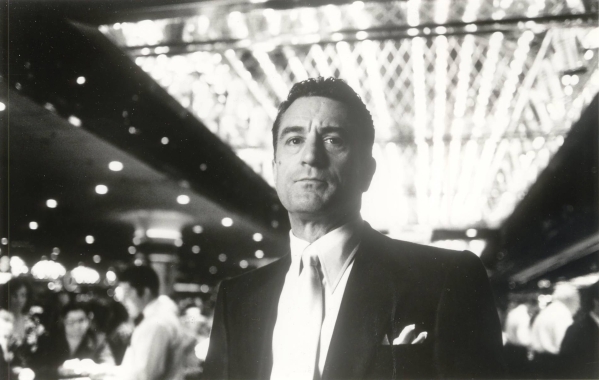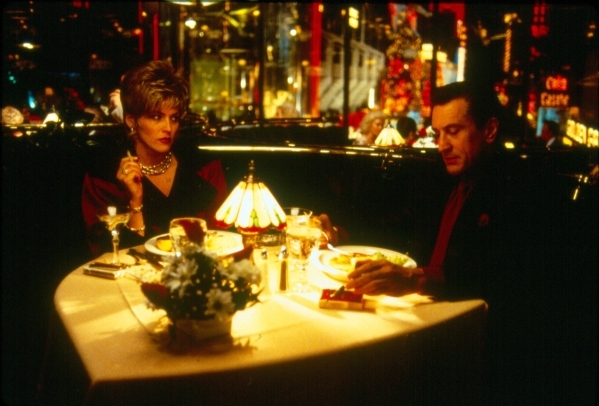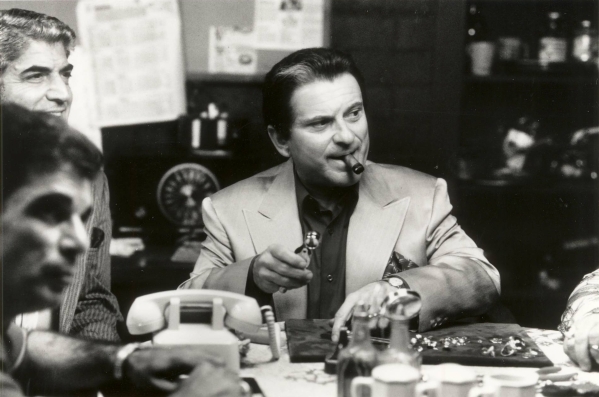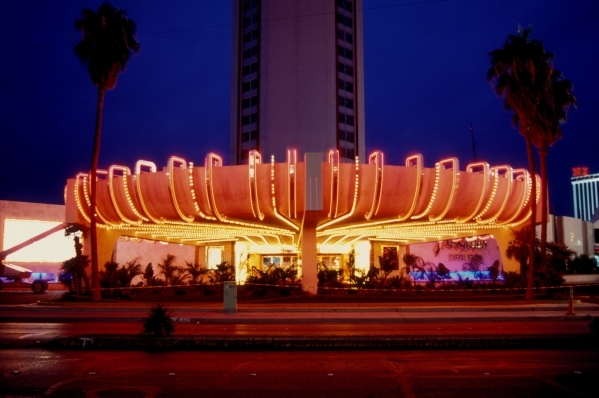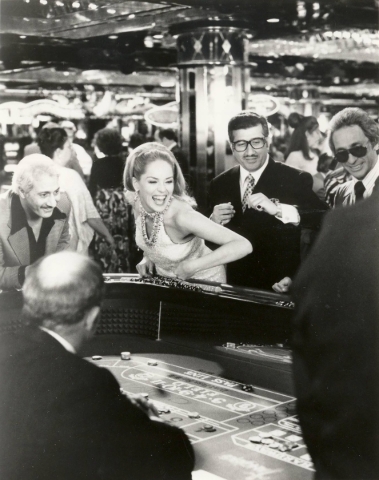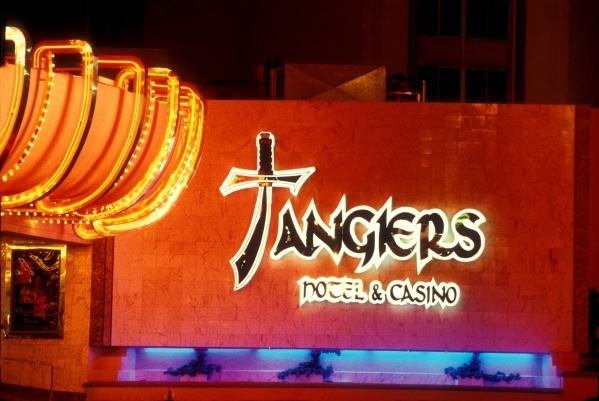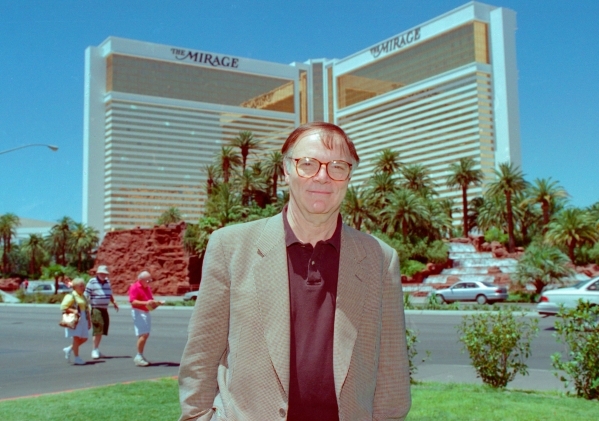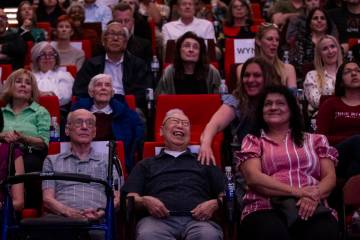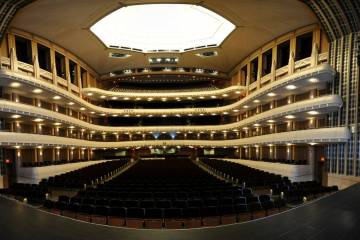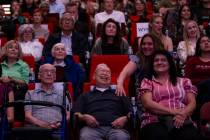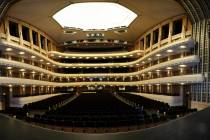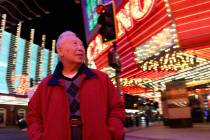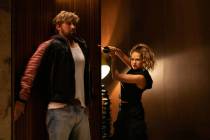‘Casino’ unflinching in its view of Las Vegas and its mob past
Most made-in-Vegas movies — from "Ocean's Eleven" (1960 or 2001, take your pick) to "The Hangover" — are just like tourists. They hit the town, they gaze in wonder at the neon-bedecked excess, they survive assorted hijinks. Then they go home.
But a few Vegas movies get us, really get us, right where we live.
And no movie fills that bill better than "Casino."
Exactly 20 years ago — on Nov. 22, 1995 — "Casino" hit movie theaters, preceded by an avalanche of great expectations.
The anticipation seemed appropriate, considering "Casino" marked a reunion of the wonderful folks behind 1990's instant-classic "Goodfellas" — led by director Martin Scorsese, writer Nicholas Pileggi and stars Robert De Niro and Joe Pesci — for an epic twilight-of-the-mob chronicle.
Add the allure of its disco-era Vegas setting — and the presence of "Basic Instinct" bombshell Sharon Stone alongside De Niro and Pesci — and "Casino" seemed like a can't-miss bet.
Not quite.
The movie wound up in fifth place on its opening weekend, eventually grossing $42.5 million in the U.S. — against a budget of an estimated $52 million. (It still managed to beat 1995's other high-profile, made-in-Vegas movies, "Showgirls" and "Leaving Las Vegas," at the box office.)
"Maybe they were expecting 'Goodfellas 2,' only in Vegas," Pileggi says of audiences during a recent telephone interview from his New York base.
Instead of "Goodfellas' " midlevel mobsters, "Casino" focused on the top of the food chain, presenting the parallel perspectives of gambler Sam "Ace" Rothstein (De Niro), modeled on Frank "Lefty" Rosenthal, and mobster Nicky Santoro (Pesci), inspired by real-life counterpart Tony "The Ant" Spilotro.
Pileggi, who "had wanted to do a thing on Vegas for many years," finally found his focus when he learned about the mob's skimming operation at select Strip casinos, which Rosenthal spearheaded until it all fell apart in the late '70s and early '80s.
"Lefty could have gone legit," Pileggi suggests. "It was his ego that brought him down."
Rosenthal's ego came into play when "Casino" was in development, the writer adds.
When approached about putting a fictionalized version of his Vegas years onscreen, Rosenthal wasn't interested — at first.
"He was amused, as if any movie company could give him enough money," Pileggi says, adding that Rosenthal told him, " 'I like you — but I'm not gonna cooperate.' "
That is, until Rosenthal heard De Niro was going to portray him — and asked if he could meet De Niro, whom he considered "the greatest actor he had ever seen," Pileggi says.
So, serving as official "Casino" ambassador, De Niro visited Rosenthal's Florida home. Soon after De Niro arrived, Rosenthal's daughter turned up to meet the visiting movie star. "By five o'clock," Pileggi says with a laugh, "the pool man had dropped by."
And so "Casino" — the movie — was on.
At the time, Pileggi was still writing his "Casino" book, so he and Scorsese wrote the screenplay — from Pileggi's notes.
The names were changed to protect the far-from-innocent, but in other respects "Casino" proved one of the few made-in-Vegas movies to capture its setting accurately, right down to the Anderson Dairy logos on the milk cartons.
Then again, "Casino's" creators had plenty of help from the locals.
Between pre-production and production, "Casino" spent about eight months in Las Vegas, headquartered "in a funky old building" on Highland Drive, recalls Maggie Mancuso, who helped Scorsese and production designer Dante Ferretti track down locations.
There were 136 filming sites in all, from "Casino's" casino — the Landmark provided the exterior, the Riviera the interiors for six weeks of overnight shoots — to such Midwestern sites as the Kansas City airport and the cornfield where Santoro and his brother met their bloody fates.
While scouting houses for the movie, "I would just go cold in neighborhoods and knock on doors," Mancuso recalls. "People would just open their doors to me," especially "if you mentioned the movie — and with those stars."
Mancuso (who, as Maggie Peterson, played "The Andy Griffith Show's" Charlene Darling and sang at the Sands) drove Scorsese and Ferretti around town to show them potential filming sites.
Ferretti, who previously worked with such legendary Italian directors as Federico Fellini, came to Las Vegas "directly from Rome" and had never been to Las Vegas, she notes. "He was just in shock. He said to me one day, 'Maggie, they are going to save five buildings in the world — and three of them are in Las Vegas.' "
Local casting director Marilee Lear, meanwhile, was busy finding only-in-Vegas performers for the production: 4,600 extras and 246 actors for speaking roles.
The actors weren't all actors, however.
In his quest for authenticity, Scorsese "liked the real people," Lear says of the director, who wanted dealers playing dealers and cops playing cops.
Even when casting bit roles, Scorsese and De Niro "sat side-by-side," auditioning every hopeful, she notes.
Including Review-Journal entertainment columnist Mike Weatherford, who tried out for — and won — a bit part as a reporter. (Mike's there in an airport scene, complete with pasted-on '70s sideburns, grilling Kevin Pollak as Phillip Green, a character based on casino frontman Allen Glick.)
Weatherford remembers "sitting in a chair against a wall across from the two of them, with a video camera in between them" before starting "improv with De Niro," because "they had said at some point, don't worry about the script. Phrase it the way you would if you were really interviewing him."
While filming another scene, Scorsese objected to the New York actor (chosen by casting director Ellen Lewis) portraying a judge, saying, " 'I thought I told you casting people I wanted a real judge,' " says Lear, who told Scorsese, "I have one standing by — he can be here in 18 minutes." (It was J. Charles "Chuck" Thompson, now a District Court senior judge.)
Lear also found someone to show Sharon Stone — playing Ginger McKenna, the chip hustler who becomes Ace's troubled wife — how to steal casino chips.
And when Scorsese "asked me if I could get an Oscar Goodman lookalike" to play Rosenthal and Spilotro's real-life attorney, Lear said there wasn't one.
Instead, Goodman played himself in "Casino" — despite the fact that he couldn't remember his lines.
"It took three days" to shoot his scenes, Goodman admits, noting that Scorsese told him to " 'Just do it the way you do it in real life.' "
Scorsese and colleagues were equally meticulous regarding "Casino's" nonspeaking characters, according to longtime location manager and scout Kim Houser Amaral, whose subsequent credits range from "Rocky Balboa" to "Last Vegas."
As "Casino's" assistant picture car coordinator, Houser Amaral was charged with rounding up 40 period-appropriate cars; she found 150. (The production ultimately rented more than 700 cars during the shoot, she says.)
Both Scorsese and De Niro "were very hands-on with all the cars," Houser Amaral notes, with Scorsese reviewing the available vehicles to blend various colors" in particular scenes. And De Niro was "very specific about which (car) he wanted."
Houser Amaral's job required her to "stay on the set with the vehicles," including her own gold-and-black 1970 Oldsmobile Cutlass — which Pesci drove in the movie.
She remembers "Pesci giving me crap every day about the car — 'Hey, get outta my car, that's my car.' " And "he always left a cigar in the ashtray," the same cigar Nicky Santoro chomped throughout the movie. (It's still in the ashtray, Houser Amaral says.)
Pesci proved so convincing that even those who knew the character's real-life inspiration were impressed, Pileggi reports.
After being transformed into Santoro for the first time, Pesci called Pileggi and requested to show off his metamorphosis.
When Pesci arrived in character at the Sands, where Pileggi was staying, "some of the dealers looked up and nearly fainted" because of the resemblance, Pileggi says — especially because Spilotro died in 1986.
Just like Spilotro, Pesci "had that swagger" as the fictionalized Santoro, the author notes.
Pesci suffered a broken rib while filming his cornfield hit scene, Mancuso says. But he wasn't the only one to sustain an injury during production.
Stone "was so plucky," Pileggi says, that she kept on working, even when she "bruised her ribs badly" during a confrontation with her on-screen husband, De Niro, who was "dragging her along the floor. She didn't want a double. … She came in, all taped up, to work some more."
But Stone did have a double: Las Vegan Rose Heeter, now a director and teacher, who worked as the actress' stand-in and turned up in some "driving scenes where you can't really tell" it's not Stone.
Heeter's presence in the movie, and on the set, seems all the more remarkable because she was fired her first day, following a boisterous greeting Heeter received from a friend on the crew.
When Heeter volunteered to find Stone another double, telling her " 'I don't know if it's possible to ignore my friends on the crew' — that turned Sharon upside down,' " Heeter recalls. Despite the initial friction, Heeter went on to work with Stone on other projects for 18 years.
Heeter's mother, a cocktail waitress at Caesars Palace during the era "Casino" depicts, vouched for the movie's accuracy, Heeter says.
"She knew the mobsters — they hung out and had pool parties," she says. "As a kid, I didn't know; I thought, they look like rich people with nice pools."
Heeter's mother visited the "Casino" set — and befriended Scorsese's mother Catherine, who not only visited the set but played a role in her son's movie. (As — you guessed it — someone's mother.)
Mrs. Scorsese also visited film classes at UNLV.
And Francisco Menendez, who heads UNLV's film department, spent "a fabulous week on set" observing Scorsese in action. (A dozen UNLV film students also worked on the production, some launching their own moviemaking careers in the process.)
"The interesting thing, mobsters were coming to visit (the set) one day, and the next day the FBI would visit," Menendez says. "The production carefully coordinated the mobsters and the FBI — they would not visit on the same day. Everyone was kind of paying (his) respects."
During production, "this town was buzzing," Goodman says. "It was a real plus for the community to have it filmed here."
Unlike most movies where "people would set two to three weeks of Vegas footage and then go back to Hollywood," Menendez says, "Casino" proved "a production could sit here and not move."
But that was then, this is now.
"Casino's " 1995 debut contrasted old-school '70s Vegas with the edge-of-the-millennium megaresort boom. (The Mirage, Luxor and MGM Grand all appear in the movie's implosion-punctuated finale; Bellagio, Mandalay Bay and The Venetian came along a few years after "Casino" hit movie screens.)
"To film Vegas, they had to be in Vegas," Mancuso explains. "There weren't casinos everywhere then."
Two decades after "Casino," Las Vegas has gone through a few more transformations, making the movie even more of a time capsule than it was at the time of its initial release.
"In retrospect, I think it really shows the town as it was," Mancuso comments.
As "Casino's" Ace Rothstein says at movie's end, "the town will never be the same."
Onscreen — or off.
For more stories from Carol Cling go to reviewjournal.com. Contact her at ccling@reviewjournal.com. Follow her on Twitter: @CarolSCling



